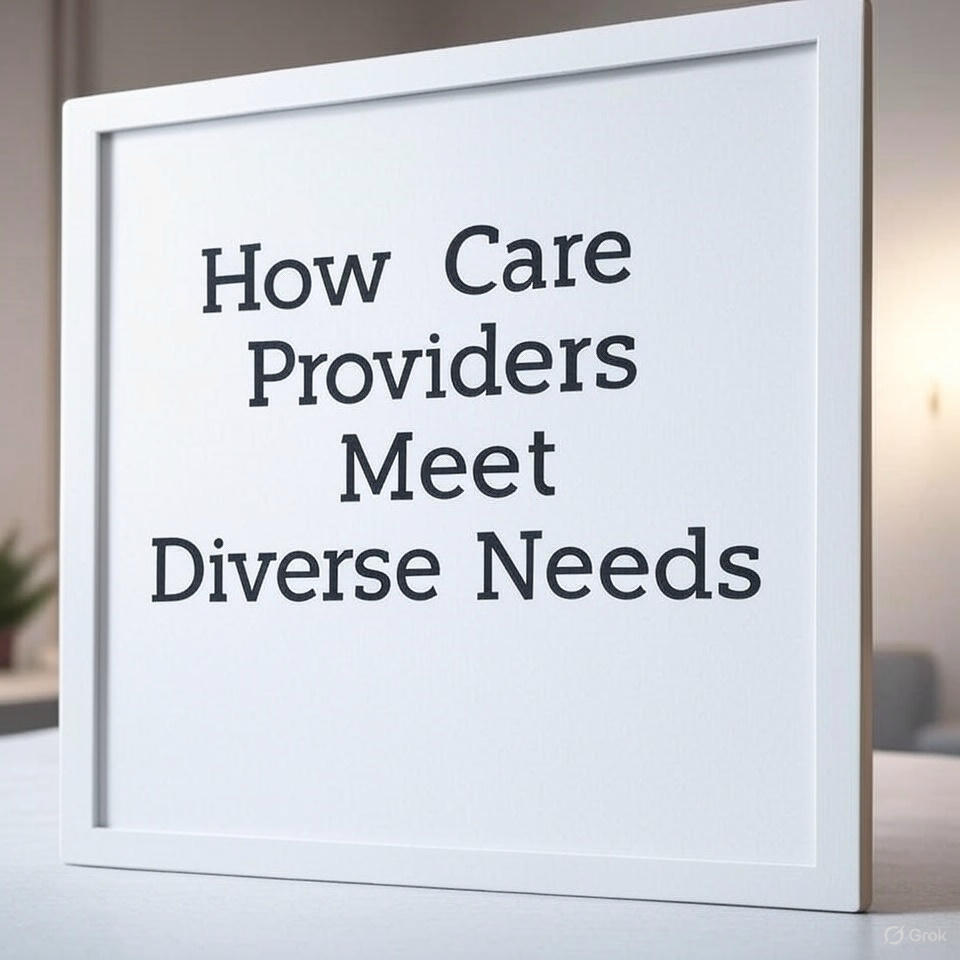Providing care that meets the diverse needs of individuals is a fundamental goal for modern care providers. As society becomes increasingly diverse, with people of diverse ages, cultures, health conditions, and personal preferences, care settings must adapt to deliver personalized, respectful, and effective support. This blog examines how care providers address this challenge to ensure that everyone receives the best possible care experience.
Understanding Individual Needs
Every person entering a care setting brings their own unique history, preferences, and requirements. Care providers begin by conducting thorough assessments to understand physical health, mental wellbeing, cultural background, dietary restrictions, and social interests. This comprehensive understanding forms the foundation for a tailored care plan.
For example, someone with dementia will have very different needs compared to a person recovering from surgery or living with physical disabilities. Care providers must be flexible and knowledgeable to support these varied needs effectively.
Personalization Through Care Planning
One of the key ways care providers meet diverse needs is through personalized care plans. These documents are living records that detail a person’s medical history, daily routines, preferences, and goals. The care plan is developed collaboratively with the individual and their family where possible.
Personalized care ensures that services go beyond just meeting basic health needs — they also focus on enhancing quality of life. Whether it’s arranging preferred meal options, facilitating cultural or religious practices, or supporting hobbies and social activities, these details make a huge difference in satisfaction and wellbeing.
Skilled and Specialized Staff
A care home’s ability to meet diverse needs heavily depends on the skills of its staff. Training in areas like dementia care, mobility support, mental health awareness, and cultural competency is essential. Skilled carers can recognize subtle changes in an individual’s condition and adapt care accordingly.
For example, a care home in Burton-on-Trent offers specialized dementia care training to its staff, ensuring that residents with memory loss receive compassionate and understanding support tailored to their individual experiences. Having access to such specialized care boosts confidence for residents and their families alike.
Inclusive and Culturally Sensitive Care
Respecting diversity means honoring cultural, religious, and lifestyle differences. Care providers encourage residents to maintain traditions, celebrate cultural events, and observe religious practices if they wish. This inclusive approach fosters a sense of belonging and respect within the care community.
Additionally, dietary preferences and restrictions are carefully considered. Whether someone requires halal, kosher, vegetarian, or allergy-sensitive meals, care providers accommodate these needs without compromising nutrition or enjoyment.
Adapting Environments and Activities
Physical and social environments are adapted to support varied needs. Accessibility is a priority—whether through wheelchair-friendly spaces, sensory gardens, or quiet rooms designed for those who may feel overwhelmed.
Activities are also tailored to accommodate abilities and interests. While some residents might enjoy group games or outings, others may prefer solitary activities like reading or art therapy. Offering a broad range of options helps every individual stay engaged and stimulated at their own pace.
Technology and Innovation
Modern care providers increasingly use technology to enhance personalized care. Digital health records allow instant access to important information, improving response times and coordination among staff.
Assistive devices like hearing aids, mobility aids, and communication tools empower residents to maintain independence. For individuals with communication difficulties, technology such as speech-generating devices can be a transformative aid.
Family and Community Involvement
Care providers understand that support networks play a crucial role in wellbeing. Encouraging family visits, involving loved ones in care decisions, and maintaining community connections are all part of meeting diverse needs.
Some care homes create opportunities for community engagement through intergenerational programs, visits from local groups, or partnerships with cultural organizations. These efforts enrich residents’ lives and reduce feelings of isolation.
Continuous Improvement and Feedback
To truly meet diverse needs, care providers actively seek feedback from residents and families. Regular reviews and surveys help identify areas for improvement and allow care plans to evolve with changing circumstances.
Staff are also encouraged to engage in ongoing professional development to keep up with best practices and emerging approaches in care.
Final Thoughts
Meeting the diverse needs of individuals in care settings requires a holistic, person-centered approach. From personalized care plans and skilled staff to cultural sensitivity and innovative technology, care providers strive to create environments where everyone feels valued and supported. This approach not only improves quality of life but also builds trust and confidence among residents and their families.





